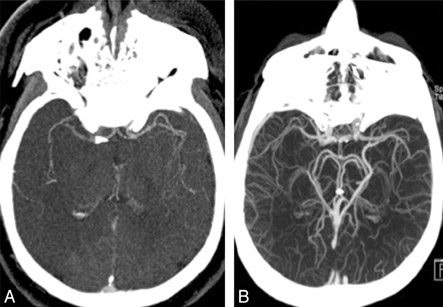Computed Tomography Angiogram CTA
Introduction
Computerized tomographic angiography is also called as CT angiography or CTA. This test combines the technology of a conventional CT scan with that of traditional angiography to create detailed images of the blood vessels in various parts of the body.
In a CT scan, X-rays and computers create images that show cross-sections, or slices, of the body. In angiography, a contrast dye is injected into a large blood vessel, usually in the leg, to help visualize the blood vessels. CT angiography is similar to a CT scan, but the contrast dye is injected into one of the veins shortly before the scan is performed. As the dye is injected into a vein rather than into an artery, (as in traditional angiography), CT angiography is considered as less invasive.
The physician may order CT angiography to diagnose:
1. A narrowing or obstruction of the arteries
2. An aneurysm
Iran has made significant progress in neurosurgery and The world renowned Iranian scientist in neurological surgery Professor Majid Samii has garnered the 2014 Golden Neuron Award. We have all the information you need about public and private clinics and hospitals that provide Neurosurgical surgeries in Iran, Islamic Republic Of with the best quality and lowest possible price

3. Deep vein thrombosis
4. Pulmonary embolism
5. Congenital vascular condition.
Procedure:
During the study, patient is asked to lie on a narrow table that slides into the center of the CT scanner machine.
Once the patient is inside the scanner, the machine’s x-ray beam rotates around the body. (Modern “spiral” scanners can perform the exam without stopping).
Tissues of varying densities absorb X-rays in varying amounts. The computer assigns these densities different numerical values and then plots an image based on these values.
During the CT angiogram, a dose of contrast dye is injected into one of the veins. As the dye flows through the circulatory system, it will highlight the target blood vessels on the scan.
A computer produces 3-dimensional images of the blood vessels from the x ray images.
The doctor should be informed if you have ever had a reaction to contrast.
Patient must be very still during the exam, as movement causes blurring of images. Patient may be told to hold the breath for short periods of time.
Generally, complete scans take only a few minutes. The modern scanners can image the entire body, from head to toe, in less than 30 seconds.
Preparation:
The CT angiogram requires a special dye, called as contrast. This dye needs to be delivered into the body before the test starts. Contrast circulates throughout the body and helps to show the blood vessels.
The doctor should be informed if you have ever had a reaction to contrast. Patient may need to take medications before the test in order to safely receive this substance.
Contrast is given intravenously before the scan. Patient is asked not to eat or drink anything for 4-6 hours before injection of the contrast.
Before receiving the contrast, the doctor should be informed if a diabetes medication called as metformin is being taken as extra precautions are needed in that case.
Patient is asked to remove any jewelry and change into a hospital gown during the study. Some people may have discomfort from lying on the hard table.
Contrast given through an IV may cause a slight burning sensation or a warm flushing of the body. These sensations are considered normal and usually go away within a few seconds.
Patient may be unsuited for CT angiography in case of:
1. An allergy to contrast dye
2. Kidney problems
3. Severe diabetes
4. Pregnancy, as radiation may harm the fetus
5. Unstable vital signs
6. Weight more than 300 pounds, as some CT scan tables cannot support the weight
Risks of CT angiogram include:
Exposure to radiation – CT scans expose the patient to more amount of radiation than regular x-rays. Having many x-rays or CT scans over time can increase the risk for cancer. However, the risk from any one scan is small. This risk should be weighed against the benefits of getting a correct diagnosis for a medical problem.
Allergy to contrast dye – Some people has allergies to contrast dye. It should be informed to the doctor if you have ever had an allergic reaction to injected contrast dye.
The most common type of contrast given into intravenously contains iodine. If a person with an iodine allergy is given this type of contrast, nausea or vomiting, sneezing, itching, or hives can occur.
If contrast absolutely needs to be given, the doctor may give antihistamines or steroids before the test.
The kidneys help to remove iodine out of the body. Those patients with kidney disease or diabetes may need to receive extra fluids after the test to help flush the iodine out of their body.
Rarely, the dye may cause a life-threatening allergic response called as anaphylaxis. If patient feels having any trouble in breathing during the test, it should be notified to the scanner operator immediately. Scanners come with a facility of an intercom and speakers, so the operator can hear the patient at all times.